
The Lamiaceae or Labiatae are a family of flowering plants commonly known as the mint, deadnettle, or sage family. Many of the plants are aromatic in all parts and include widely used culinary herbs like basil, mint, rosemary, sage, savory, marjoram, oregano, hyssop, thyme, lavender, and perilla, as well as other medicinal herbs such as catnip, salvia, bee balm, wild dagga, and oriental motherwort. Some species are shrubs, trees, or, rarely, vines. Many members of the family are widely cultivated, not only for their aromatic qualities, but also their ease of cultivation, since they are readily propagated by stem cuttings. Besides those grown for their edible leaves, some are grown for decorative foliage. Others are grown for seed, such as Salvia hispanica (chia), or for their edible tubers, such as Plectranthus edulis, Plectranthus esculentus, Plectranthus rotundifolius, and Stachys affinis. Many are also grown ornamentally, notably coleus, Plectranthus, and many Salvia species and hybrids.
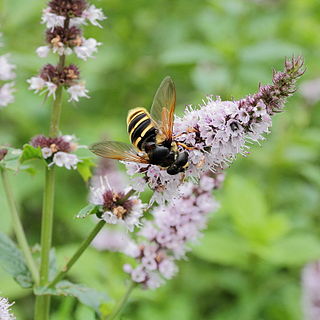
Mentha, also known as mint, is a genus of flowering plants in the family Lamiaceae. It is estimated that 13 to 24 species exist, but the exact distinction between species is unclear. Hybridization occurs naturally where some species' ranges overlap. Many hybrids and cultivars are known.

Mimosa is a genus of about 600 species of herbs and shrubs, in the mimosoid clade of the legume family Fabaceae. Species are native to the Americas, from North Dakota to northern Argentina, and to eastern Africa as well as the Indian subcontinent and Indochina. The generic name is derived from the Greek word μῖμος (mimos), an "actor" or "mime", and the feminine suffix -osa, "resembling", suggesting its 'sensitive leaves' which seem to 'mimic conscious life'.
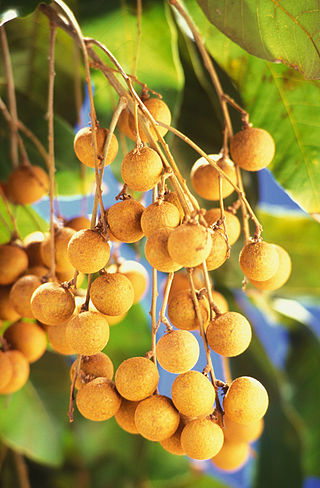
Dimocarpus is a genus of trees or shrubs in the flowering plant family Sapindaceae. It includes 7 species which grow naturally in tropical south and Southeast Asia, Malesia, Papuasia, and Australasia, including Sri Lanka, India, the Philippines, southern China, Taiwan, Myanmar, Cambodia, Vietnam, Malaysia, Indonesia, New Guinea, East Timor, far north-eastern Queensland, Australia.
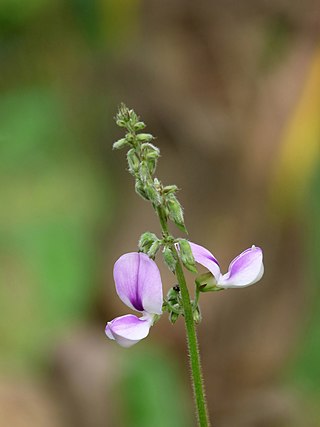
Pueraria is a genus of 15–20 species of legumes native to south, east, and southeast Asia and to New Guinea and northern Australia. The best known member is kudzu, also called Japanese arrowroot. The genus is named after 19th century Swiss botanist Marc Nicolas Puerari.

Mucuna is a genus of around 114 accepted species of climbing lianas (vines) and shrubs of the family Fabaceae: tribe Phaseoleae, typically found in tropical and subtropical forests in the Americas, sub-Saharan Africa, southern, southeastern, and eastern Asia, New Guinea, Australia, and the Pacific Islands.

Terminalia is a genus of large trees of the flowering plant family Combretaceae, comprising nearly 300 species distributed in tropical regions of the world. The genus name derives from the Latin word terminus, referring to the fact that the leaves appear at the very tips of the shoots.

Calliandra is a genus of flowering plants in the pea family, Fabaceae, in the mimosoid clade of the subfamily Caesalpinioideae. It contains about 140 species that are native to tropical and subtropical regions of the Americas.
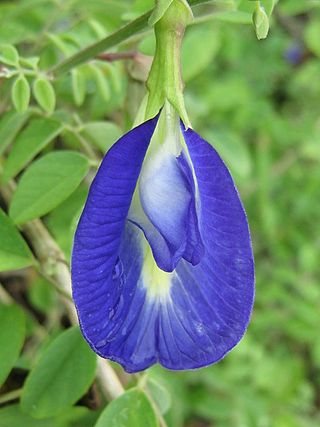
Clitoria is a genus of mainly tropical and subtropical, insect-pollinated flowering pea vines.

Cupaniopsis is a genus of about 45 species of flowering plants in the family, Sapindaceae and are native to Fiji, Indonesia, New Caledonia, New Guinea, the Solomon Islands Vanuatu, Samoa, Torres Strait Islands, Micronesia and Australia. Plants in the genus Cupaniopsis are trees with paripinnate with small, regular flowers with 5 sepals and petals with 6 to 10 stamens and the fruit a capsule.

Chrysobalanaceae is a family of flowering plants, consisting of trees and shrubs in 27 genera and about 700 species of pantropical distribution with a centre of diversity in the Amazon. Some of the species contain silica in their bodies for rigidity and so the mesophyll often has sclerenchymatous idioblasts. The widespread species Chrysobalanus icaco produces a plum-like fruit and the plant is commonly known as the coco plum.

Monardella is a genus of approximately 40 species of annual and perennial plants native to western North America from British Columbia to northwestern Mexico. They are grown for their highly aromatic foliage, which in some species is used for herbal teas. The two-lipped, tubular flowers are formed in terminal clusters and are most usually red, pink, or purple.
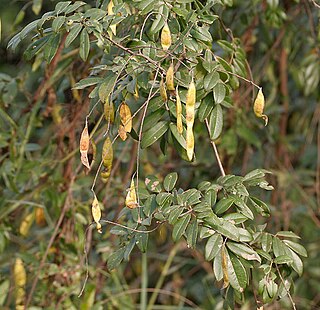
Derris is genus of leguminous plants. It contains 65 species, which range from eastern Africa to the Indian subcontinent, Southeast Asia, New Guinea, northern Australia, and the southwest Pacific islands. The roots of D. elliptica contain rotenone, a strong insecticide and fish poison.

Elattostachys is a genus of about 21 species of trees known to science, constituting part of the plant family Sapindaceae.
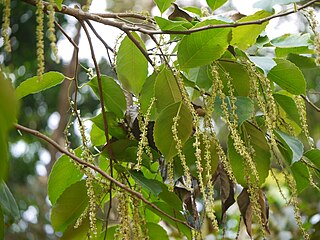
Homalium is a genus of plants in the family Salicaceae.

Aganope is a genus of flowering plants in the family Fabaceae. It belongs to the subfamily Faboideae. The genus contains 11 species, which range across sub-Saharan Africa, south and southeast Asia, and New Guinea.

Lumnitzera is an Indo-West Pacific mangrove genus in the family Combretaceae. An English common name is black mangrove. Lumnitzera, named after the German botanist, Stephan Lumnitzer (1750-1806), occurs in mangroves from East Africa to the Western Pacific, and northern Australia.
Brachypterum is a genus of flowering plants in the pea family (Fabaceae). It includes eleven species, which range from the Indian Subcontinent through Indochina, southern China, Malesia, New Guinea, and eastern Australia.

Anne M. Schot is a Dutch botanist.

















